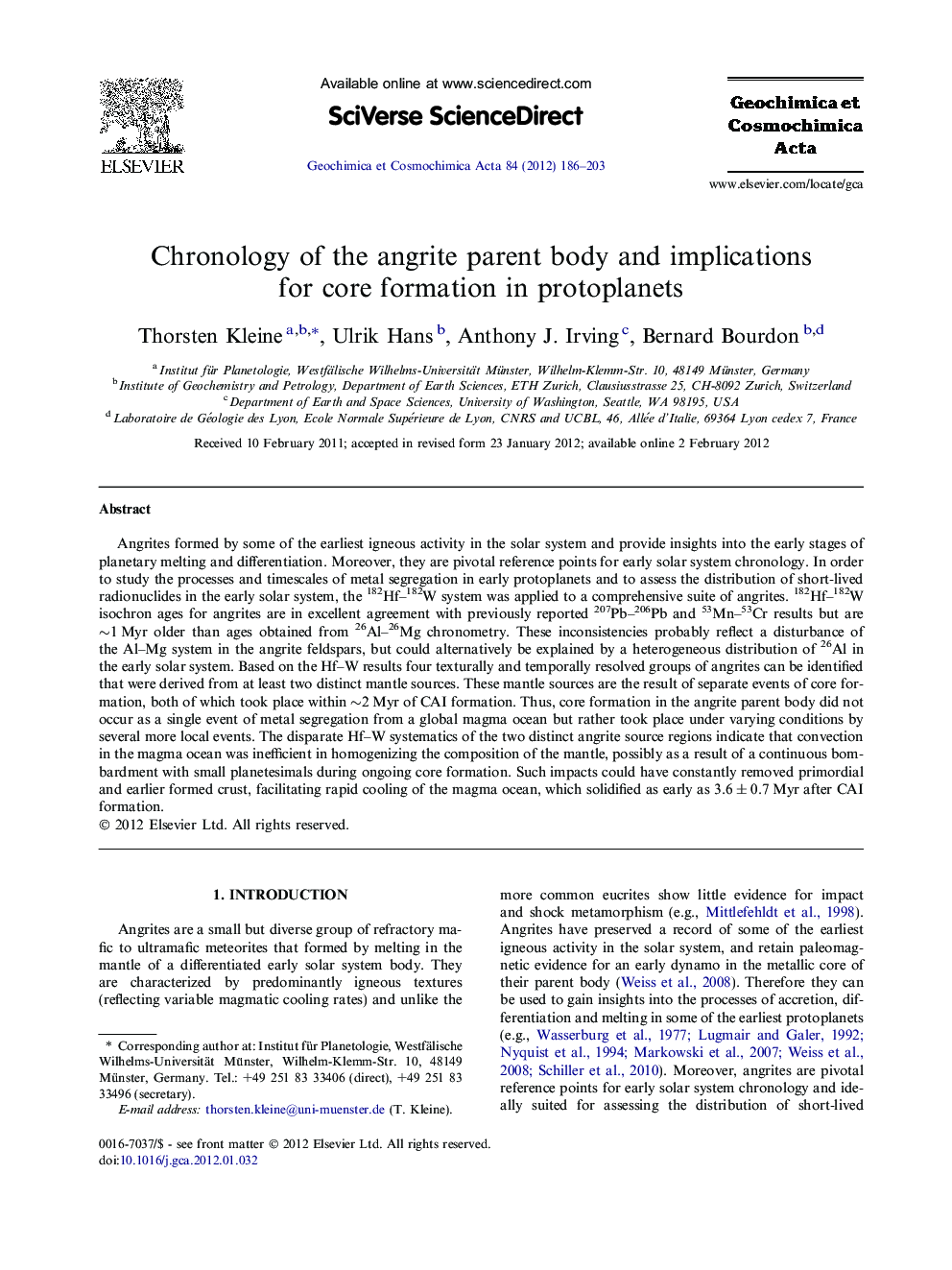| کد مقاله | کد نشریه | سال انتشار | مقاله انگلیسی | نسخه تمام متن |
|---|---|---|---|---|
| 4702943 | 1638073 | 2012 | 18 صفحه PDF | دانلود رایگان |

Angrites formed by some of the earliest igneous activity in the solar system and provide insights into the early stages of planetary melting and differentiation. Moreover, they are pivotal reference points for early solar system chronology. In order to study the processes and timescales of metal segregation in early protoplanets and to assess the distribution of short-lived radionuclides in the early solar system, the 182Hf–182W system was applied to a comprehensive suite of angrites. 182Hf–182W isochron ages for angrites are in excellent agreement with previously reported 207Pb–206Pb and 53Mn–53Cr results but are ∼1 Myr older than ages obtained from 26Al–26Mg chronometry. These inconsistencies probably reflect a disturbance of the Al–Mg system in the angrite feldspars, but could alternatively be explained by a heterogeneous distribution of 26Al in the early solar system. Based on the Hf–W results four texturally and temporally resolved groups of angrites can be identified that were derived from at least two distinct mantle sources. These mantle sources are the result of separate events of core formation, both of which took place within ∼2 Myr of CAI formation. Thus, core formation in the angrite parent body did not occur as a single event of metal segregation from a global magma ocean but rather took place under varying conditions by several more local events. The disparate Hf–W systematics of the two distinct angrite source regions indicate that convection in the magma ocean was inefficient in homogenizing the composition of the mantle, possibly as a result of a continuous bombardment with small planetesimals during ongoing core formation. Such impacts could have constantly removed primordial and earlier formed crust, facilitating rapid cooling of the magma ocean, which solidified as early as 3.6 ± 0.7 Myr after CAI formation.
Journal: Geochimica et Cosmochimica Acta - Volume 84, 1 May 2012, Pages 186–203